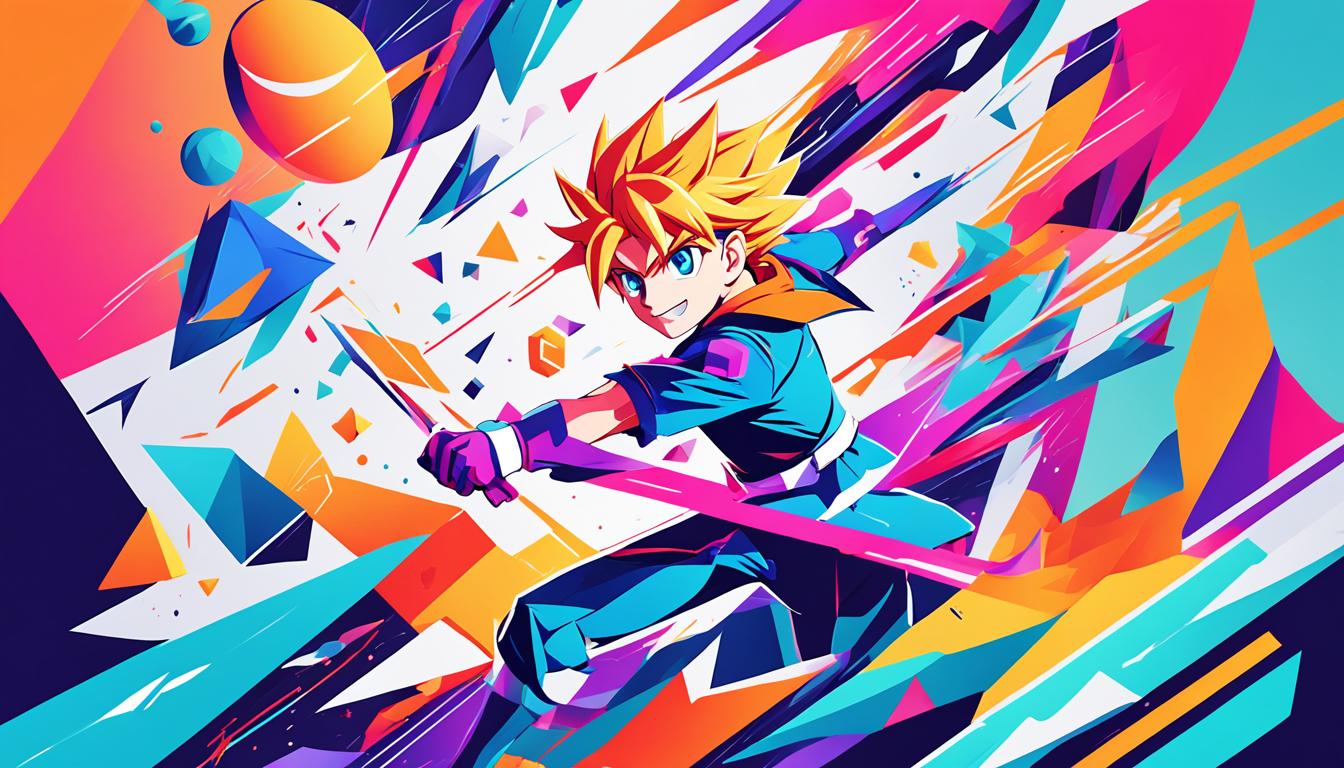
Product Marketing Trends to Watch Out For

“The future of marketing is not about products or services. It’s about creating memorable experiences and building relationships with your customers.” – Brian Solis
In the fast-paced world of marketing, it is crucial to stay ahead of the curve and adapt to the ever-changing landscape. As 2021 approaches, it’s time to take a closer look at the upcoming product marketing trends that will shape the industry in the coming years. From emerging techniques to innovative strategies, these trends will redefine the way businesses connect with their target audience and drive growth.
In this article, we will explore the top product marketing trends to watch out for in 2021. From the continued popularity of short-form video content to the rising influence of nano-influencers, we will delve into the strategies that will drive success for businesses in the near future. Get ready to embrace the future of product marketing!
Key Takeaways:
- Short-form video content, such as TikTok and Instagram Reels, will continue to dominate and capture the attention of consumers.
- Personalized content will play a crucial role in engaging customers and delivering tailored experiences based on their preferences.
- Social media optimization will be essential in maximizing visibility and reach on different platforms.
- Nano-influencers with smaller but highly engaged audiences will become increasingly influential in driving brand awareness.
- Live podcasts will provide a unique opportunity for audience engagement and authentic connections with listeners.
Trend #1: Continued popularity of short-form video content
Short-form videos have become incredibly popular in recent years, with platforms like TikTok and Instagram Reels leading the way. These bite-sized videos offer a quick and engaging way to capture the attention of consumers. Marketers can leverage short-form videos for various purposes, such as:
- Product teasers to generate excitement and interest
- Customer testimonials to build trust and credibility
- Behind-the-scenes videos to provide a glimpse into the brand’s personality and culture
The short length of these videos makes them perfect for capturing the attention of consumers with shorter attention spans. With the rise of interactive features and creative editing tools, short-form videos have become a powerful tool for video marketing and customer engagement.
Whether it’s a 15-second dance challenge or a 30-second tutorial, short-form videos allow brands to express their creativity and connect with their audience on a more personal level. These videos are highly shareable and can quickly go viral, helping brands reach a wider audience and increase brand awareness.
“Short-form videos are the future of content marketing. They offer a quick and easy way to connect with your audience and create memorable experiences.” – Marketing Expert
| Benefits of short-form video content | Examples |
|---|---|
| Instantaneous engagement | A 15-second tutorial demonstrating a product’s usage |
| Viral potential | A creative dance challenge that encourages user participation |
| Higher social media reach | A behind-the-scenes video showcasing the brand’s manufacturing process |
| Enhanced brand personality | A humorous skit featuring brand ambassadors |
| Increased customer engagement | A customer testimonial highlighting the benefits of a product |
Short-form video content is here to stay, and smart marketers are embracing this trend to captivate their target audience and drive meaningful customer engagement.
Trend #2: More focus on personalized content
Personalization has become an essential aspect of marketing, and in 2024, there will be a greater emphasis on creating personalized content. Marketers will use data and AI to deliver content that is tailored to individual customer preferences. This includes not only suggesting relevant products but also customizing content based on browsing behavior, previous purchases, and other factors.
“Personalization is not just about addressing your customers by their names; it’s about delivering a unique experience that resonates with their needs and desires.”
With personalized content, you can create a connection with your audience, making them feel valued and understood. By understanding customer preferences, you can provide targeted recommendations, tailored promotions, and relevant information that aligns with their interests. This not only increases customer engagement but also boosts conversion rates and customer loyalty.
The future of personalization lies in hyper-personalization, a strategy that takes personalization to the next level. Hyper-personalization considers specific customer needs and preferences by leveraging advanced data analysis and AI technologies. It goes beyond surface-level personalization and dives deep into understanding each customer on an individual level.
By harnessing the power of hyper-personalization, you can deliver highly targeted content that truly speaks to your customers. Whether it’s through personalized emails, customized website experiences, or tailored product recommendations, hyper-personalization enables you to provide a unique journey for each customer.
The Benefits of Personalized Content
Personalized content offers a range of benefits for both marketers and customers:
- Increased customer engagement and satisfaction
- Improved conversion rates
- Enhanced brand loyalty and customer retention
- Higher ROI on marketing campaigns
- A competitive edge in the market
With the right tools and strategies in place, you can unlock the true potential of personalized content and create meaningful connections with your audience. So, start leveraging personalized content to stand out from the crowd and deliver exceptional experiences.
| Key Features of Personalized Content | Benefits |
|---|---|
| Customized product recommendations | Increase in upsell and cross-sell opportunities |
| Tailored promotions and offers | Higher conversion rates |
| Personalized emails and newsletters | Improved customer engagement and click-through rates |
| Dynamic website content based on user preferences | Enhanced user experience and customer satisfaction |
| Custom landing pages for different audience segments | Improved targeting and relevancy |
Trend #3: Importance of social media optimization
Social media has become a crucial marketing channel, and optimizing your social media posts is essential for maximum visibility. By implementing effective social media optimization strategies, you can enhance your brand’s online presence and reach a wider audience.
One of the key aspects of social media optimization is using relevant keywords that align with your target audience’s interests and search queries. Incorporating these keywords into your posts and profiles enhances the discoverability of your content and improves your chances of appearing in relevant search results.
In addition to keywords, leveraging hashtags can significantly improve the reach and engagement of your social media posts. Using popular and trending hashtags related to your industry or topic increases the visibility of your content among users who follow or search for those hashtags. It also helps you tap into discussions and conversations happening in your niche.
Descriptive data, such as compelling captions and informative descriptions, are essential for grabbing your audience’s attention and encouraging them to engage with your content. Craft engaging and concise captions that convey the value or message of your post effectively. Provide relevant and specific descriptions that entice users to click, like, share, or comment on your posts.
It’s important to understand that each social media platform performs differently in terms of reach, engagement, and audience demographics. Therefore, it’s crucial to choose the right channels based on your target audience’s preferences and behaviors. Platforms like Instagram and Facebook have shown high ROI for organic content and offer great opportunities for social media optimization.
Different social media platforms and their performance:
| Social Media Platform | Key Features | Platform Performance |
|---|---|---|
| – Visual content focus – Great for brand storytelling – Effective use of hashtags and engaging captions |
– High engagement rates – Strong influencer presence – Opportunities for organic reach and brand partnerships |
|
| – Diverse user base – Strong community building capabilities – Robust advertising options |
– Wide reach – Targeted advertising options – Effective for B2C and B2B marketing |
|
| – Real-time updates – Efficient use of hashtags for visibility – Quick communication with followers |
– Fast-paced environment – Good for customer service and engagement – News and trend sharing |
It’s crucial to monitor the performance of each social media platform to ensure that your efforts are focused on the most effective channels for your business. Analyze the metrics like reach, engagement, conversions, and audience demographics to make informed decisions and optimize your social media strategy accordingly.
By prioritizing social media optimization and leveraging the unique features and power of each platform, you can maximize your brand’s visibility, engagement, and overall success in the dynamic world of social media marketing.
Trend #4: The rise of nano-influencers
Nano-influencers are becoming increasingly influential in the world of influencer marketing. These niche influencers have a smaller following, typically ranging from 1,000 to 10,000 loyal followers. Despite their smaller numbers, nano-influencers have a unique advantage – a close and personal connection with their audience.
Collaborating with nano-influencers can bring significant benefits to brands. Due to their smaller scale, working with nano-influencers is a cost-effective marketing strategy that allows brands to reach a specific target audience without breaking the bank. Furthermore, partnering with niche influencers enables brands to tap into their authentic and engaged communities, fostering genuine interactions that can result in increased customer loyalty and trust.
Unlike macro or celebrity influencers whose content may feel more polished or detached, nano-influencers often maintain a more relatable and down-to-earth approach. This relatability enhances their influence as their followers perceive their recommendations to be authentic and trustworthy.
Benefits of collaborating with nano-influencers:
- Cost-effective marketing: Since nano-influencers have smaller audiences, their rates for collaboration are generally lower compared to larger-scale influencers, making it a more affordable option for brands with budget constraints.
- Targeted reach: Nano-influencers specialize in specific niches, allowing brands to directly connect with their desired target audience. This targeted approach ensures that the brand’s message is delivered to the most relevant and interested audience.
- Authentic engagement: Nano-influencers have a closer relationship with their followers, facilitating genuine conversations and interactions. Their audience often views them as trustworthy sources of recommendations, leading to higher engagement and conversions.
Collaborating with nano-influencers can be a brilliant strategy for brands looking to maximize their marketing efforts and connect with a highly engaged and loyal audience. To leverage the power of these niche influencers, brands should carefully identify and partner with nano-influencers whose values align with their own, ensuring an authentic and mutually beneficial collaboration.
Trend #5: Increased popularity of live podcasts
Podcasts have become increasingly popular, and in 2024, live podcasts will take center stage. Live podcasts provide a unique opportunity for audience engagement and allow listeners to interact with their favorite podcasters in real-time. The authenticity of live podcasts makes them more relatable and trustworthy to listeners. Brands can partner with podcast hosts to reach a wider audience and leverage the engaged, loyal listenership that podcasts offer.
Listeners crave real-time experiences, and live podcasts deliver just that. Whether it’s through interactive Q&A sessions, live interviews, or real-time audience participation, live podcasts bring a sense of immediacy and connection that recorded episodes sometimes lack. The ability to engage with hosts and fellow listeners in real-time creates a shared experience that fosters a sense of community and loyalty.
The rise of live podcasts is also driven by the growing demand for authentic content. Listeners appreciate the unscripted nature of live broadcasts, which allows for spontaneity and genuine conversations. The lack of editing and post-production adds to the authenticity and rawness of the content, making listeners feel like they are part of a real conversation rather than a polished and rehearsed performance.
Live podcasts offer a platform for unfiltered conversations and real-time audience engagement. It’s like tuning in to a live radio show where anything can happen. The ability to interact with the audience creates a sense of connection and builds trust with the listeners.
For brands, live podcasts present an opportunity to showcase their expertise, connect with their target audience, and build brand loyalty. By partnering with popular podcast hosts or creating their own live podcast series, brands can tap into the loyal and engaged podcast audience. This allows for direct communication and engagement with potential customers, enhancing brand awareness and fostering a deeper connection.
When it comes to metrics, live podcasts offer valuable insights into audience engagement. Real-time listener comments, reactions, and questions provide immediate feedback, allowing podcast hosts and brands to gauge the impact of their content and make adjustments on the spot. This real-time feedback loop enables hosts and brands to create content that resonates with their audience and increase audience retention.
The Benefits of Live Podcasts:
- Real-time audience engagement
- Authentic and unfiltered conversations
- Opportunity for direct brand-audience interaction
- Insights into audience engagement and feedback
With the increasing popularity of podcasting and the demand for authentic content, live podcasts are poised to become a powerful marketing tool in the years to come. The combination of audience engagement, authenticity, and brand exposure makes live podcasts a compelling choice for marketers looking to connect with their target audience and stand out in a crowded digital landscape.
| Pros of Live Podcasts | Cons of Live Podcasts |
|---|---|
| Real-time audience interaction | Technical challenges (e.g., connectivity issues) |
| Opportunity for immediate feedback and adjustments | Requires careful planning and preparation |
| Authenticity and rawness of unedited content | Potential for unexpected interruptions or mistakes |
| Building a sense of community and connection | Difficulty in reaching a wide audience simultaneously |
Trend #6: Growing importance of AI in marketing
Artificial intelligence (AI) is reshaping the marketing industry, and its significance will continue to rise in 2024. Marketers are harnessing the power of AI to streamline processes, save time, and gain valuable insights that inform strategic decision-making. By leveraging AI technologies, marketers can enhance their campaigns, create compelling content, and achieve greater efficiency and effectiveness in their marketing efforts.
One of the key areas where AI is making a significant impact is in content creation. AI-powered tools and platforms can generate personalized and engaging content at scale, enabling marketers to deliver relevant messages to their target audience. Whether it’s writing blog posts, crafting social media captions, or creating email campaigns, AI algorithms can analyze data and consumer behavior to generate highly relevant and creative content.
Another crucial application of AI in marketing is data analysis. With the exponential growth of data available to marketers, AI algorithms can efficiently analyze vast amounts of data and extract meaningful insights. This enables marketers to gain a deeper understanding of their audience, identify trends, and optimize their marketing strategies based on data-driven insights. AI-powered data analysis tools allow marketers to make informed decisions and allocate resources more effectively.
– Emphasize text with the power of AI
The Benefits of AI in Marketing
The integration of AI into marketing strategies brings numerous benefits to businesses:
- Improved efficiency: AI automates repetitive tasks, freeing up marketers’ time to focus on more strategic activities.
- Enhanced personalization: AI enables marketers to deliver highly personalized experiences based on customer data, preferences, and behavior.
- Real-time optimization: AI algorithms can analyze data in real-time, allowing marketers to adjust their campaigns and strategies on the fly for maximum impact.
- Improved targeting: AI-powered tools enable precise audience segmentation, ensuring that marketers reach the right people with the right message.
- Advanced analytics: AI can process and analyze complex data sets, uncovering insights that may have otherwise gone unnoticed.
AI is reshaping the marketing landscape, providing marketers with unprecedented opportunities to connect with their audience, improve campaign performance, and achieve their business goals.

AI in Content Creation
AI is transforming content creation by automating and augmenting processes in writing, design, and video production. Marketers can leverage AI tools to generate blog posts, social media content, and video scripts that are tailored to their audience’s interests and preferences. These AI-powered content creation tools help marketers save time and resources while ensuring high-quality and engaging content.
AI in Data Analysis
The volume and complexity of marketing data have made it challenging for marketers to derive actionable insights. AI-powered data analysis tools can efficiently process, analyze, and visualize large datasets, allowing marketers to uncover patterns, trends, and correlations. By leveraging AI in data analysis, marketers can make data-driven decisions, optimize their campaigns, and improve overall performance.
AI in Customer Segmentation
Customer segmentation is critical for effective targeting and personalization. AI algorithms can analyze and classify customers based on demographic, behavioral, and psychographic data. This enables marketers to create highly targeted campaigns and deliver personalized experiences that resonate with different segments of their audience.
AI in Marketing Automation
Marketing automation is a key application of AI in marketing. AI-powered marketing automation tools can handle various tasks, such as lead nurturing, email marketing, and customer support. By automating these processes, marketers can streamline their operations, nurture leads more effectively, and deliver personalized experiences at scale.
| Benefits of AI in Marketing | Application |
|---|---|
| Improved efficiency | Automated tasks, streamlined operations |
| Enhanced personalization | Delivering relevant and personalized experiences |
| Real-time optimization | Adjusting campaigns and strategies in real-time |
| Improved targeting | Precise audience segmentation |
| Advanced analytics | Uncovering meaningful insights from complex data |
Trend #7: Virtual reality and augmented reality making a comeback
Virtual reality (VR) and augmented reality (AR) are set to make a thrilling comeback in 2024. With advancing technology and increased accessibility, businesses can harness the power of VR and AR to create captivating and immersive experiences, thereby captivating and engaging their audience like never before.
These cutting-edge technologies can be applied in a multitude of ways, including product demonstrations, virtual tours, and interactive brand experiences. By incorporating VR and AR into their marketing strategies, brands can effectively differentiate themselves from the competition and provide their customers with memorable and unique experiences that truly leave a lasting impression.
Imagine being able to virtually try on clothes, explore a destination, or visualize a product in your own space before making a purchase. VR and AR have the potential to revolutionize the way consumers interact with brands, enabling a deeper level of brand engagement and connection. By utilizing these immersive technologies, businesses can create meaningful experiences that resonate with their target audience, fostering brand loyalty and advocacy.































